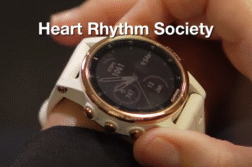PLANO, Texas (Ivanhoe Newswire) – Each year, more than 40,000 babies are born with congenital heart defects, or CDHs. These infants have problems with the structure and function of their hearts that can include holes in their hearts or valves that don’t work properly. New procedures, technologies, and medications are helping these newborns live longer than ever before – in fact, according to The American Heart Association, there are more adults in the U.S. living with congenital heart defects than children. Now, the latest procedure is giving adults an even greater chance at living a long, healthy life. Heart New Life
Just doing something as simple as walking her dogs, Remy and Josie, is something Stacey Zvokel couldn’t easily do a few years ago. Stacey was born with a bicuspid aortic valve. Her aortic valve had two flaps instead of three, making it difficult for her heart to pump blood into the body.
She explains, “I had significant blockage where the blood flow was not coming in, which put me at risk for heart failure.”
She needed an aortic valve replacement.
Cardiothoracic surgeon at Baylor Scott & White with The Heart Hospital in Plano, Texas, Dr. William Brinkman says, “Stacey fits into the Ross category perfectly ‘cause she’s a young, active female who doesn’t want to be on any coagulation and wants to live a long time.”
Dr. Brinkman says it’s the only operation that replaces the diseased aortic valve with the patient’s own tissue.
“We are basically taking your pulmonary valve and moving it over to where the aortic valve was. The beauty of the Ross procedure is, the only aortic valve replacement where you have your own living tissue still functioning as a valve,” Dr. Brinkman explains.
Studies show that the Ross procedure has a lower risk of stroke or clots forming and it has better long-term outcome compared to conventional aortic valve replacement.
Dr. Brinkman adds, “It’s the only valve replacement with a long-term survival parallels the survival of the average American population, which is remarkable.”
Ross saved Stacey’s heart and changed her life.
“I realized, ‘Oh my word, I feel so good.’ I didn’t realize how bad I actually felt until I got better,” Stacey says with relief.
The ideal patient for the Ross procedure is fit and under 50. The other options for aortic valve replacements are a mechanical valve, which requires a lifetime of blood thinners, or replacing the valve with a cow-based or pig-based valve, but they often tend to wear out in 10 to 15 years.
Contributors to this news report include: Marsha Lewis, Producer; Roque Correa, Videographer & Editor.
To receive a free weekly e-mail on medical breakthroughs from Ivanhoe, sign up at: http://www.ivanhoe.com/ftk
Sources:
MEDICAL BREAKTHROUGHS
RESEARCH SUMMARY
TOPIC: ROSS TO THE RESCUE: GIVING STACEY’S HEART NEW LIFE
REPORT: MB #5254
BACKGROUND: Congenital heart defects are structural abnormalities of the heart or major blood vessels that are present at birth. These defects can affect the heart’s chambers, valves, or blood vessels, leading to improper blood flow, which can impact the heart’s ability to pump blood effectively. CHDs are the most common birth defects, affecting approximately 1 in 100 newborns worldwide. There are various types of congenital heart defects, and they can range from mild to severe. Some common types include atrial septal defect, ventricular septal defect, tetralogy of Fallot, transposition of the great arteries, and coarctation of the aorta.
https://www.cdc.gov/ncbddd/heartdefects/features/kf-chd-estimates-us.html
https://www.nhs.uk/conditions/congenital-heart-disease/types/
DIAGNOSING: Diagnosing CHDs in infants may involve a physical examination to listen to the baby’s heart and lungs and look for signs of cyanosis or other physical abnormalities. Diagnostic tests are also commonly performed which consist of various tests, such as echocardiography, electrocardiography, chest X-rays, and cardiac catheterization, are also performed to confirm the diagnosis and assess the severity of the defect.
NEW TECHNOLOGY: New cardiothoracic surgeon approaches to treating congenial heart defects include the use of The Ross Procedure. This procedure is a surgical technique used to treat certain congenital heart defects involving the aortic valve. The Ross Procedure involves the replacement of a patient’s diseased aortic valve with their own pulmonary valve, followed by the replacement of the pulmonary valve with a valve from a human donor or a mechanical valve.
FOR MORE INFORMATION ON THIS REPORT, PLEASE CONTACT:
Deke Jones
If this story or any other Ivanhoe story has impacted your life or prompted you or someone you know to seek or change treatments, please let us know by contacting Marjorie Bekaert Thomas at mthomas@ivanhoe.com




